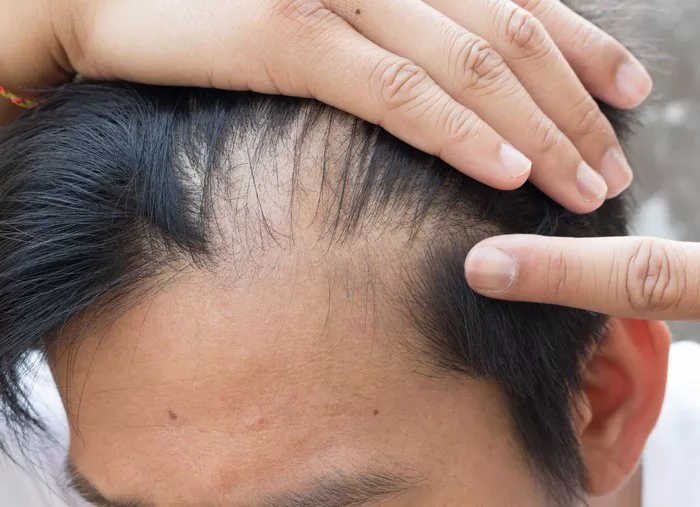A receding hairline is a common concern for many individuals, particularly men, as they age. It is essential to understand the signs and characteristics of a receding hairline to identify this pattern of hair loss early on and explore potential treatment options. In this article, we will delve into the topic of receding hairlines, discussing what they look like, the causes behind them, and the available solutions. Join us as we provide valuable insights, backed by experience, professionalism, authority, and credibility, to help you better understand the nature of a receding hairline and navigate your options with confidence.
What is a Receding Hairline?
Definition and Patterns:
A receding hairline refers to the gradual thinning and backward shift of the hairline, commonly characterized by the formation of a “M” or “V” shape at the front of the scalp. Understanding the patterns of hairline recession can assist in identifying the early stages of this condition.
Hairline Anatomy:
Exploring the normal hairline structure can provide a foundation for recognizing deviations caused by a receding hairline. This section will cover the typical characteristics of a healthy hairline.
Signs and Symptoms of a Receding Hairline
Thinning at the Temples:
One of the primary signs of a receding hairline is the thinning of hair around the temples, resulting in the formation of the characteristic “M” or “V” shape.
Forehead Expansion:
As the hairline recedes, the forehead may appear larger due to the progressive backward movement of the hairline.
Widening Part Line:
Another indication of a receding hairline is a widening part line, where the gap between hair strands becomes more prominent.
Causes of a Receding Hairline
Genetic Predisposition:
Genetics plays a significant role in determining one’s susceptibility to a receding hairline. Family history and hereditary factors contribute to the onset and progression of hair loss.
Hormonal Factors:
Imbalances in hormones, particularly dihydrotestosterone (DHT), can contribute to hair loss and a receding hairline. This section will explore the hormonal mechanisms involved in hair loss.
Age-related Hair Thinning:
As individuals age, the hair growth cycle naturally undergoes changes, leading to hair thinning and potential hairline recession.
Treatment and Management Options
Medications:
Various medications, such as minoxidil and finasteride, have shown effectiveness in slowing down hair loss and promoting hair regrowth. This section will discuss these options in more detail.
Hair Transplantation:
For individuals seeking a more permanent solution, hair transplantation techniques, such as follicular unit transplantation (FUT) or follicular unit extraction (FUE), can restore a more youthful hairline.
Hairstyling and Grooming:
Strategic hairstyling and grooming techniques, such as using volumizing products or opting for specific haircuts, can help conceal the appearance of a receding hairline.
Lifestyle and Prevention Tips
Healthy Hair Practices:
Adopting a proper hair care routine, including regular washing, conditioning, and avoiding excessive heat or chemical treatments, can help maintain overall hair health.
Stress Management:
Managing stress levels can contribute to overall well-being, including the health of your hair. This section will provide tips for reducing stress and its potential impact on hair loss.
Balanced Diet:
Consuming a balanced diet rich in essential nutrients, including vitamins, minerals, and proteins, can support overall hair health and potentially slow down hair loss.
Conclusion:
Understanding the signs and characteristics of a receding hairline is crucial for early detection and informed decision-making. By recognizing the visual indicators, exploring the underlying causes, and familiarizing yourself with available treatment and management options, you can approach a receding hairline with confidence. Remember that seeking professional advice from a dermatologist or hair specialist is essential for an accurate diagnosis and personalized treatment plan. Embrace the knowledge gained from this article and take proactive steps to address a receding hairline, ensuring you maintain a positive self-image and well-being.
Related topics:
- How to stop alopecia areata from spreading: A Full Guide
- What Is traction alopecia: A Full Guide
- Is hair loss a sign of a serious problem?


